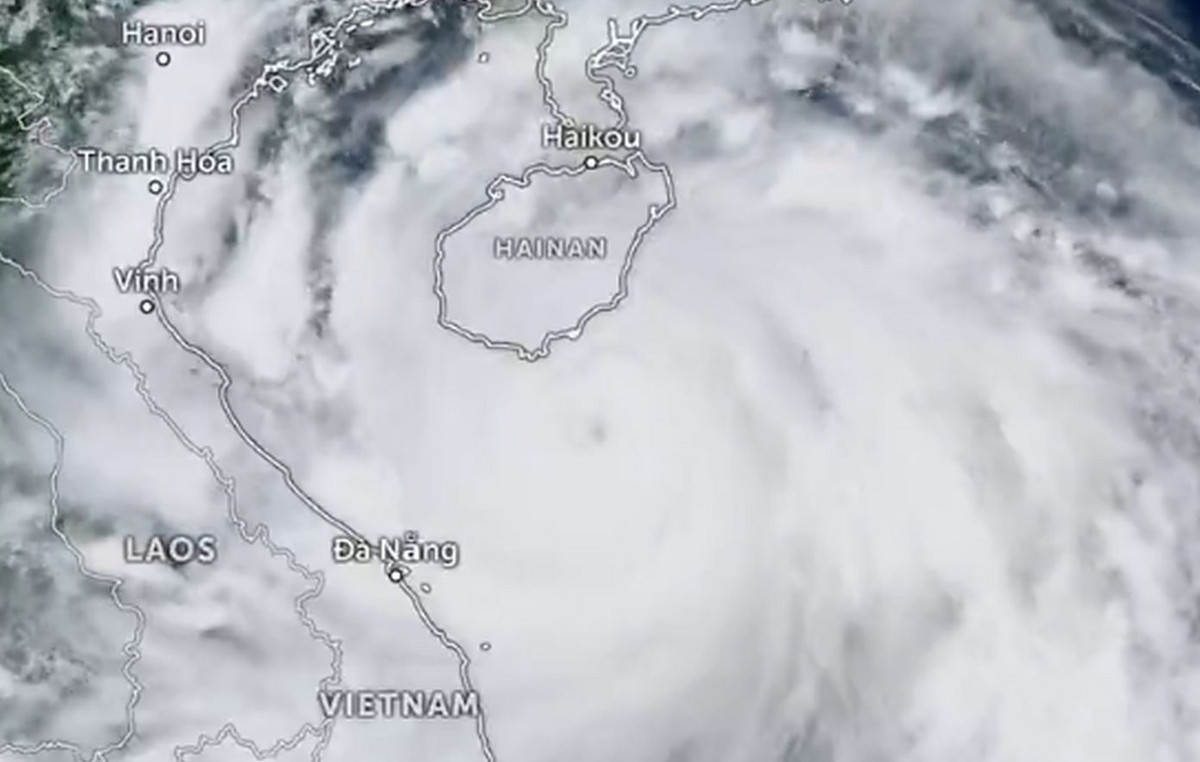A United States Navy ship intercepts missiles launched by Houthi rebels in Yemen. Two American bases in Syria are under attack. In Iraq, drones and rockets fired at US forces.
At the moment, the Palestinian territory of Gaza may be the one receiving the most spotlight, following successive attacks by Israel. Yet across the Middle East, red warning lights flash incessantly to warn that more clashes are coming.
This warning derives from the dispatch of two groups of aircraft carriers and the deployment of more than two thousand US Marines in the Eastern Mediterranean, with the aim of demonstrating strength and dissuading Iran and its allies, Syria and Hezbollah, from open new fronts against Israel.
US President Joe Biden spent seven hours in Israel on Wednesday (18), expressing full support for Benjamin Netanyahu’s campaign with his successive bombings of the Gaza Strip, while warning Israeli leaders, and repeating this in his speech on Thursday (19) night at the White House, lest they be blinded by anger.
Biden pledges to provide Israel with billions of dollars in additional aid.
Before that, Secretary of State Antony Blinken spent seven hours in meetings with Israel’s war cabinet.
At the same time, the US airlifts enormous quantities of munitions and equipment to aid the Israeli war effort.
It all boils down to this: the United States is getting closer and closer to the very real possibility of direct involvement in a regional war in the Middle East. This is not the 1991 campaign to expel Saddam Hussein’s army from Kuwait or the 2003 invasion of Iraq, both of which were preceded by months of planning and preparation.
Now, at best, the United States is struggling to respond to developments that are largely beyond its control.
And in this dangerous terrain, the growing American military presence across the Middle East becomes evident.
Regional rivalries
The US has troops in northeast and southeast Syria, a country where Bashar al-Assad’s army and forces from Russia, Turkey, Iran, Hezbollah, and a number of anti-regime factions and Kurdish militias operate, as well as active remnants of the Islamic State.
Israel regularly bombs targets in Syria, most recently Aleppo and Damascus airports, with the aim of preventing Iran from transporting weapons and ammunition.
The US also has a military presence in Iraq, where well-armed and experienced Iranian-backed militias operate largely independently of the government in Baghdad.
And then there is Iran. Despite decades of US sanctions, Iran has managed to develop a range of sophisticated weaponry. Its Islamic Revolutionary Guard Corps (IRGC) has gained valuable combat experience in Syria and Iraq. It has provided training and weapons to the Houthis in Yemen, the Syrian regime, Hezbollah, Hamas and Islamic Jihad.
Following the January 2020 assassination of IRGC commander Qasem Soleimani by the US, Iran managed to fire a series of missiles at a US base in neighboring Iraq.
Remember: bombing hits hospital in the Gaza Strip
And while it costs thousands of dollars to transport a U.S. soldier or Marine to the Middle East, it is just a bus ride for an IRGC soldier to get to Baghdad, Damascus, or Beirut.
The US may have the strongest military in the world, but as American disasters in Vietnam and Afghanistan have proven, this is no guarantee of victory over a determined and resourceful enemy. Or, in the current case, the Middle East, full of enemies.
During recent visits to Beirut, Damascus, Baghdad and Doha, Iranian Foreign Minister Hossein Amir-Abdollahian repeatedly warned that if Israel continues its offensive against Gaza, the opening of new fronts cannot be ruled out. Empty rhetoric, perhaps. Or maybe not.
Protests against Israel and the USA
As the war in Gaza rages, the Middle East is buzzing with protesters. In Jordan, Lebanon, Libya, Yemen, Iran, Turkey, Morocco, Egypt, and elsewhere, protests have exploded against Israel, but much of this protest is also directed against Israel’s most persistent and generous supporter. Israel, the United States.
Jordan’s King Abdullah, Washington’s most cooperative Arab friend, canceled his scheduled meeting with President Biden in Amman following the deadly explosion at the Baptist Al-Ahli Hospital in Gaza.
There is no doubt that he and the other participants in the planned meeting, Egyptian President Abdel Fattah el-Sisi and Palestinian Authority (PA) President Mahmoud Abbas, were reluctant to be seen alongside an American leader who has embraced Israel so passionately as the death toll in Gaza rises steadily.
The United States can still count on allies among the region’s autocrats. But on the streets, the Middle Eastern population’s understanding of the USA and Israel is different.
Dissatisfaction was intensified after a deadly explosion that hit the Al-Ahli Baptist Hospital, in Gaza, on Tuesday (17), killing hundreds of people. Palestinian authorities accuse Israel of attacking the hospital. Israel denies it. A CNN was unable to independently identify the perpetrator of the attack.
Meeting in Cairo on Thursday (19), President Sisi and King Abdullah issued a joint statement warning that “if the war does not stop and expand, it threatens to plunge the entire region into catastrophe.”
I spent last week reporting along the border between Lebanon and Israel, the central thread of this catastrophe.
Hezbollah fighters target Israeli army positions daily, using guided missiles to target tanks, troops and, most consistently, surveillance and communications equipment.
See also: CNN shows situation in Gaza hospital after bombing
The military wings of Hamas and Islamic Jihad occasionally fire volleys of rockets at Israel. The Israelis counterattack by targeting what they say is Hezbollah’s military infrastructure. Combatants and civilians were killed and injured on both sides.
It’s enough to keep nerves on edge, but it’s still not enough to precipitate an all-out war, and it’s still not enough to draw the US into the conflict. But the real possibility exists.
The American aircraft carrier groups on the horizon are there to dissuade Iran, Hezbollah and others from going too far. If they do and the US responds, then all bets are off.
All the pieces are now in place for the decades-long dispute between Israel and Hamas to explode into a regional cataclysm. And the US may be in the middle of it.
Source: CNN Brasil
Bruce Belcher is a seasoned author with over 5 years of experience in world news. He writes for online news websites and provides in-depth analysis on the world stock market. Bruce is known for his insightful perspectives and commitment to keeping the public informed.







